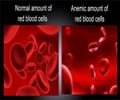Patients with chemotherapy-induced anemia and anemia associated with chronic kidney disease (CKD) will now have access to Amgen's Aranesp, which is a prefilled autoinjector.
Patients with chemotherapy-induced anemia and anemia associated with chronic kidney disease (CKD) will now have access to Amgen's Aranesp, which is a prefilled autoinjector. The product will be available initially in the United States.
"With the availability of the Aranesp prefilled SureClick autoinjector, healthcare providers and patients now have a new secure and simple option that automatically delivers a complete subcutaneous injection in a single use," said Willard Dere, MD, senior vice president for global development and chief medical officer at Amgen. "The added safety features of the SureClick autoinjector minimize potential needlestick injuries, offering dependable benefits for nurses, oncologists and nephrologists who administer Aranesp in clinics and hospitals."The Aranesp prefilled SureClick autoinjector has three important and unique safety features, including a safety cover that limits needle exposure before and after the subcutaneous injection, two audible clicks to announce the beginning and end of the injection, and a large inspection window that confirms it automatically delivered the complete injection. In a survey that included the use of the Aranesp prefilled SureClick autoinjector, most oncology nurses agreed that the device was easy to use.
The Centers for Disease Control and Prevention (CDC) estimates that one out of every seven healthcare professionals is accidentally stuck by a contaminated sharp, most often a needle, each year. Approximately 62 to 88 percent of needlestick injuries can potentially be prevented by the use of safer devices. To reduce these occupational hazards, the CDC has identified eight desirable characteristics for safety devices, and the Aranesp prefilled SureClick autoinjector has at least six of these characteristics.
The FDA approval of the Aranesp prefilled SureClick autoinjector broadens current administration options for healthcare providers and patients with anemia associated with chemotherapy and CKD. There are now three administration options for Aranesp: single-use SureClick autoinjector, SingleJect® prefilled syringes and prefilled vials. This wide range of delivery options allows healthcare professionals to select the option that best meets their needs and their patients' and staffs' needs. The Aranesp prefilled SureClick autoinjector will be available in clinics, hospitals and retail pharmacies, along with the other currently available administration options. Additionally, the Aranesp prefilled SureClick autoinjector will be offered at the same price as the other administration methods.
The Aranesp prefilled SureClick autoinjector, which was approved in the European Union in 2005 for patients with chemotherapy-induced anemia and anemia associated with CKD, has been delivered to approximately 500,000 patients to-date.
About Chemotherapy-Induced Anemia Chemotherapy can reduce the bone marrow's ability to produce red blood cells that transport oxygen from the lungs to all of the body's muscles and organs. Anemia occurs when there are too few red blood cells and the body's tissues are "starved" of oxygen, which can make a patient feel short of breath, very weak, faint and tired.
Advertisement
Although anemia is one of the most common side effects of chemotherapy, it is often not recognized and frequently under-treated, despite treatments that have been available for more than a decade. In fact, approximately half of patients with a hemoglobin level less than the recommended target level of 11 to 12 g/dL in the National Comprehensive Cancer Network® (NCCN) guidelines for "Cancer and Treatment-Related Anemia" are never treated with erythropoietic therapy.
Advertisement
Important Safety Information Aranesp is contraindicated in patients with uncontrolled hypertension. Erythropoietic therapies may increase the risk of thrombotic events and other serious events. Seizures have occurred in patients with Chronic Kidney Disease. The target hemoglobin (Hb) should not exceed 12 g/dL. If the Hb increase exceeds 1.0 g/dL in any 2-week period, dose reductions are recommended. In a study of Epoetin alfa treated hemodialysis patients with clinically evident cardiac disease, where the target hematocrit (Hct) was 42% (Hb = 14 g/dL), an increased incidence of thrombotic events and mortality was seen. The reason for increased mortality observed in this study is unknown. In a study with another erythropoietic product, in women with metastatic breast cancer receiving chemotherapy, where the target Hb was 12 – 14 g/dL, an increased incidence of thrombotic events, disease progression, and mortality was seen.
Cases of pure red cell aplasia (PRCA) and of severe anemia, with or without other cytopenias associated with neutralizing antibodies to erythropoietin have been reported in patients treated with Aranesp. This has been reported predominately in patients with CRF receiving Aranesp by subcutaneous administration. A sudden loss of response to Aranesp, accompanied by severe anemia and low reticulocyte count, should be evaluated. If anti-erythropoietin antibody-associated anemia is suspected, withhold Aranesp and other erythropoietic proteins. Aranesp should be permanently discontinued in patients with antibody-mediated anemia. Patients should not be switched to other erythropoietic proteins.
The most commonly reported side effects in clinical trials in patients with CRF were infection, hypertension, hypotension, myalgia, headache, and diarrhea. The most commonly reported side effects in clinical trials in patients with chemotherapy-induced anemia were fatigue, edema, nausea, vomiting, diarrhea, fever, and dyspnea.
Source-Eurekalert
RAS






